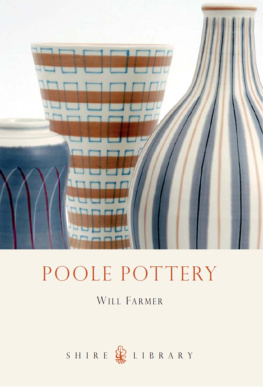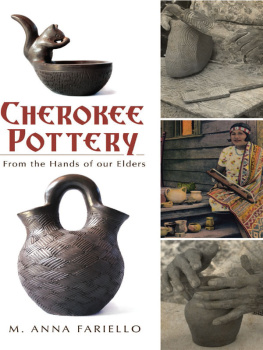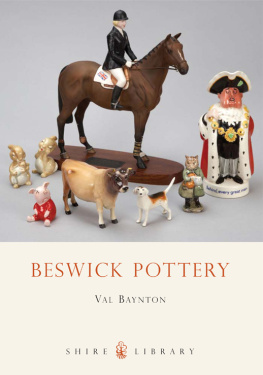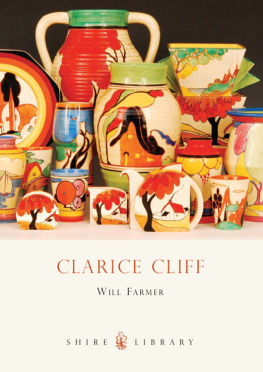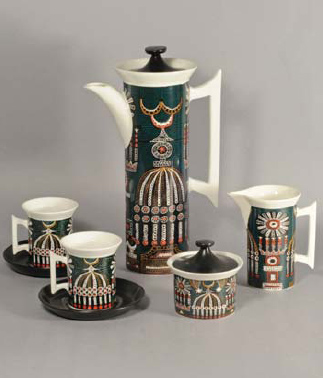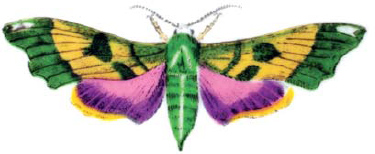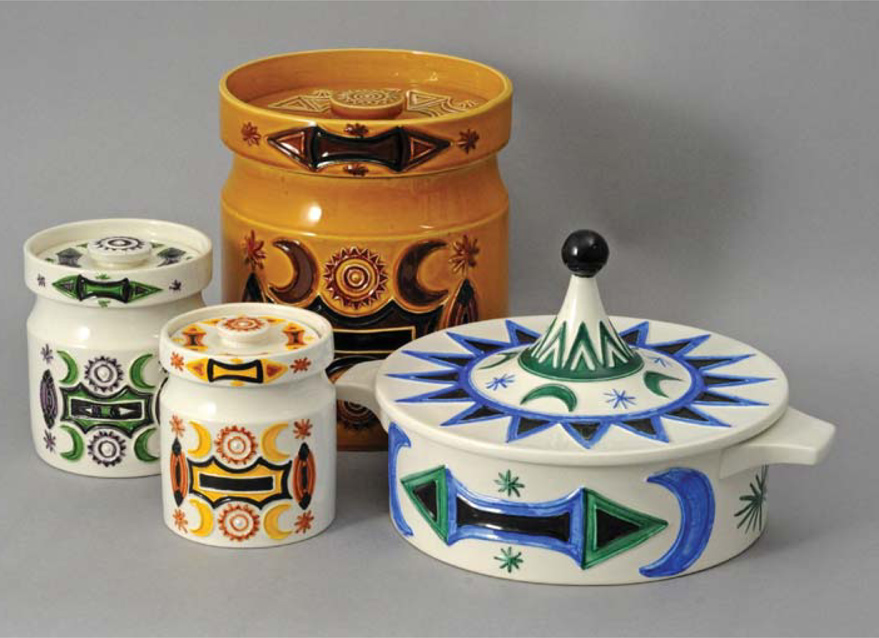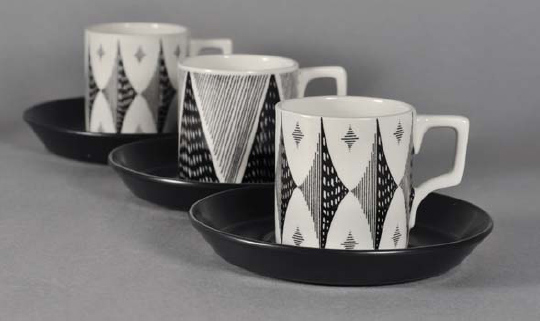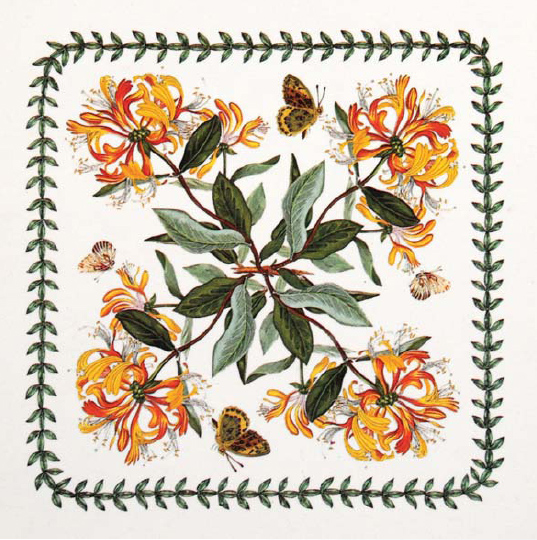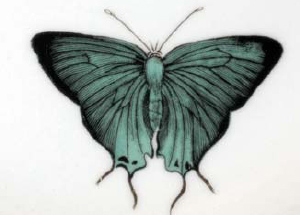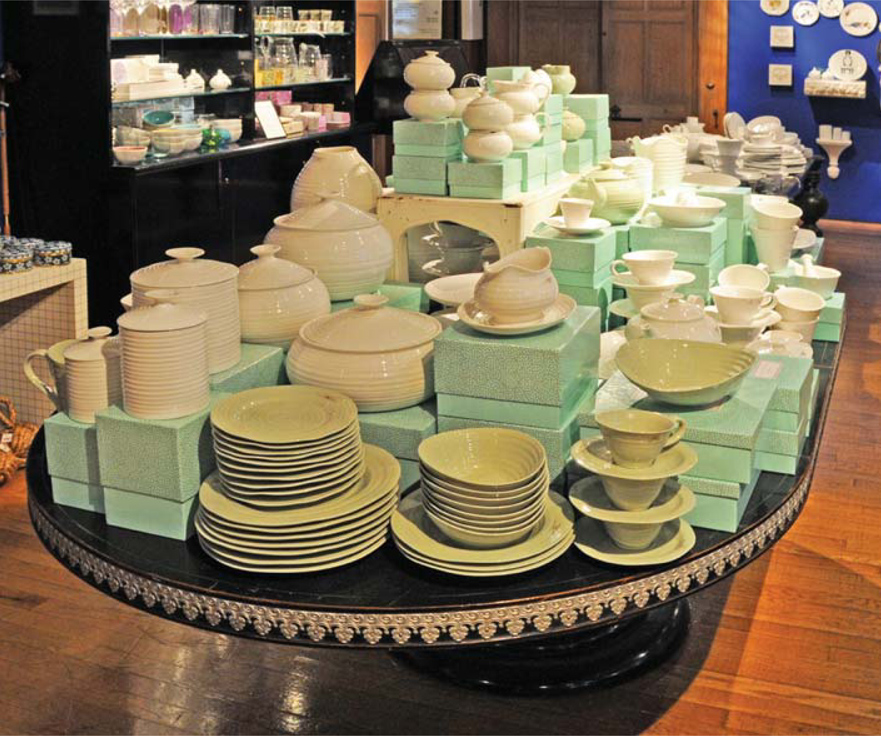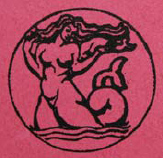PORTMEIRION POTTERY
Will Farmer and Rob Higgins
SHIRE PUBLICATIONS
Magic City was an all-over transfer print where towers from Portmeirion village were moved to the city and illuminated with stars or fireworks; it was introduced in 1966.
CONTENTS
Moth, detail fromBotanic Garden plate
INTRODUCTION
I N 1953 Susan Williams-Ellis started to manage the souvenir shop in Portmeirion, the Italianate holiday resort her father had built in North Wales. At first she commissioned wares to her own designs from Grays Pottery in Stoke-on-Trent, and then in 1960 she bought Grays followed by Kirkhams, which enabled her to manufacture as well as to decorate. In 1963 Portmeirion Pottery launched a series of designs that were to catapult Susan Williams-Ellis to the forefront of tableware design. Her creations captured the imagination of the public with contemporary designs that did not follow the traditions of Stoke-on-Trent, yet nor were they derivative of contemporary Scandinavian or Italian styles.
Samarkand, 1964, was a development of Susans moulded wares. Instead of being covered by single-glaze colour, the motifs were picked out with hand-applied colours.
Coffee cans in the Black Diamond pattern, a simplified version of the Gold Diamond introduced by Susan in 1961.
Strikingly tall Cylinder coffee pots received the bold, almost crayon lines of Monte Sol transfers, and the Totem range had raised surface patterns, which were highlighted in flowing green, blue, amber or white glazes. By the early 1970s Portmeirion was a leader for fashionable tableware, as well as producing huge numbers of cheaper gifts and souvenirs, including everything from mugs to chamber pots.
Susan Williams-Ellis updated the design range in the 1970s with new shapes, the best available technology for transfer printing and the revival of carefully selected antique prints. Botanic Garden, launched in 1972, adapted eighteenth- and early nineteenth-century flower prints, but with a definition and boldness that matched contemporary living. More than any single design for household ceramics in the last fifty years, Botanic Garden has proved to have global appeal with millions of homes around the world using it every day.
Fruit, fish and bird designs followed, again using antique prints and the best available transfer-printing technology. Pomona, Compleat Angler and British Birds respectively remain in production, though Botanic Garden still makes up about half the output of the Portmeirion Potteries.
As Portmeirion Pottery moves into the twenty-first century it has become Portmeirion Group plc, with worldwide marketing and production. Sales and outsourced manufacture in the Far East are critical to the companys future financial stability. The tableware range now includes contemporary designs in modern fluid shapes, decorated in pastel green and blue shades.
Botanic Garden drawing from The Portmeirion Book of Country Cooking, 1988.
Butterfly, detail from Botanic Garden plate.
Not only surviving but riding the global economic downturn, Portmeirion has assimilated several businesses, including two of the greatest names of British ceramics, Spode and Royal Worcester. The UK workforce is expanding, and production of Spodes historic Blue Italian range has once more returned to Stoke-on-Trent. With the introduction of the iconic heritage design range from Susan Williams-Ellis and continuing injections of contemporary design, Portmeirion promises to have a strong future.
The Sophie Conran Collection has been enormously successful since its launch and is seen here in 2011, taking centre stage in the homeware section of the premier department store Liberty of London.
The Portmeirion holiday village basking in sun, with the tower at its high point, showing the Italianite design inspirations.
PORTMEIRION VILLAGE AND GRAYS POTTERY
T HE STORY OF Portmeirion Pottery really began in 1953 when a young Susan Williams-Ellis took charge of the gift shop in Portmeirion, the Italianate holiday village in North Wales built by her father, Clough Williams-Ellis. Born in 1883, he was an architect with many varied commissions ranging from country houses to larger-scale Government schemes. His family had roots in North Wales, and while serving in the Army during the First World War he toyed with the idea of building a holiday village.
After the war he was asked if he knew anyone interested in buying an estate on the coast in North Wales, a few miles south-east of Porthmadog. The land sat perfectly with the idea of his ambitious creation and so Williams-Ellis purchased it on his own behalf. He later said:
I have always been more interested in the grouping of buildings than in individual structures however prestigious, and a perfect site for a demonstration of my theories and fancies on a lovely peninsula almost on my doorstep proved irresistibleI wanted to show that one could develop a very beautiful site without defiling it and indeed, given sufficient sympathy and skill, one might even enhance what nature had provided.
Speaking of his architectural style, he commented that he enjoyed creating
... piquant contrasts whereby both old and new would gain an interest. Thus, where I judged that I had perhaps a trifle overplayed the picturesque, I would pop in a bland faade of serene classical formality: for example, the village aspect of the Bridge House as seen beyond the shamelessly picturesque front of the black weather-boarded Pilot House. In the same manner the Palladian Gloriette vivaciously contradicts the more sober, old, converted stable block across the way.
In a similar manner some years later, Portmeirion Pottery grew almost organically from the village and the sea, the rich countryside and the Welsh people. Shapes and graphics were also directly drawn from the village, notably the tall Bell Tower and the domed Pantheon.




